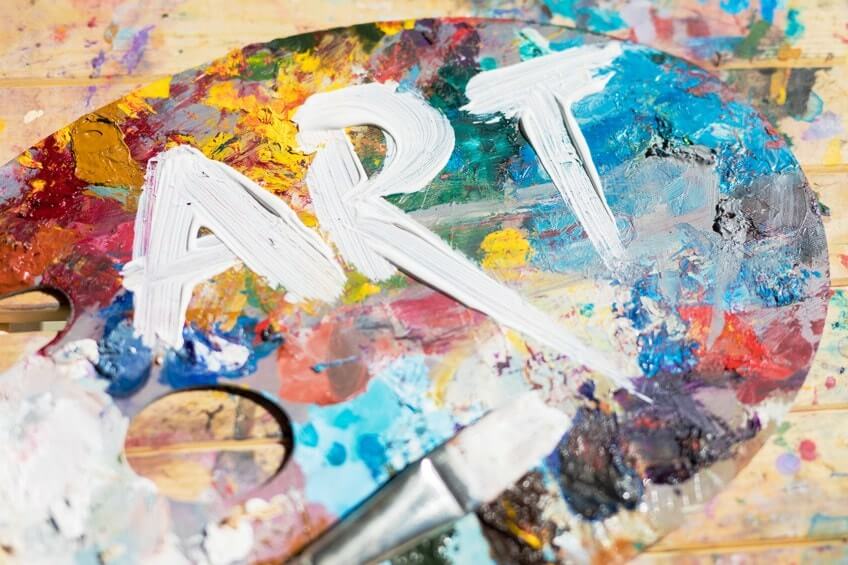It’s now possible to have works of art in your home without spending a fortune. There are various activities that allow you to reproduce famous works of art, both old and modern. With just a few materials and a lot of imagination, you can hang a Monet, a Van Gogh, or even a Picasso on your walls. So, why not discover three ways to reproduce famous works of art?
The Legality of Reproducing Works of Art
For any art lover, the dream of owning one or more masterpieces is a common one. However, the high prices of such works often make them unattainable for many. Fortunately, there is an alternative for those who want to have these works in their home: reproductions.
Although painting reproductions are legal, they are also regulated. Before reproducing any work, it’s important to check whether the author has authorized or prohibited reproduction. If the author has given permission, they may or may not request copyright fees. If the author has prohibited reproduction, then the work cannot be used at all.
In cases where the author is still alive, it’s necessary to ask for permission before reproducing their work. If the author is deceased, the consent of their heirs or rights holders is required. However, if the author has been deceased for more than 70 years, the work is considered to be in the public domain and can be freely used.
To avoid any potential disputes with authors or their heirs, it’s important to thoroughly inform yourself about the regulations surrounding reproductions. This step is particularly crucial for contemporary works.
Reproducing Paintings with Paint by Numbers
Are you a fan of art paintings? Have you ever thought about reproducing them yourself? Well, it’s possible! Today, there are techniques that allow you to create well-known works of art right at home, and one such technique is called “paint by number.” It’s a creative hobby that not only provides an excellent way to get into art, but also lets you reproduce works of art.
If you’re interested in trying this technique, you can easily find paint by numbers for adults online or in physical stores. These sets offer a wide selection of themes, such as animals, landscapes, portraits, or even specific artists. Most of the time, sellers offer kits that include everything you need to get started right away.
The principle of paint by number is simple. The painting is sectioned into several numbers, and each number is assigned a specific color. All you have to do is paint according to the numbers indicated on the canvas. As you paint, the painting takes shape before your eyes. Whether you have an artistic soul or not, you can easily reproduce a work of art with this technique.
Paint by number is accessible to both children and adults, and it’s a great opportunity to learn new techniques and improve your knowledge. The best part is that you don’t have to worry about reproduction rights. If the kits are for sale, it means that they have already obtained the necessary authorizations for their commercialization.
Reproducing Relief Artwork with Diamond Art
If you enjoy reproducing famous works of art, there are many creative hobbies to choose from besides paint-by-number kits. One such hobby is diamond art, also called diamond painting. This method adds a new dimension to art by creating depth and sparkle using small rhinestone diamonds. The result is a unique and glittering piece of art.
The diamond art process is similar to paint-by-number. The diamonds, which come in different colors, are stuck onto a pre-painted canvas. You can purchase diamond painting kits from crafting e-commerce websites, which typically include a canvas with your chosen image, packets of rhinestones, tweezers, a stylus, and glue. Alternatively, you can acquire your own materials and create a customized work of art. The canvas is divided into numbered squares, and you simply stick the diamonds onto the corresponding numbers. This creates a textured artwork that sparkles and shines.
Depending on your skill level and focus, you can complete a painting in a matter of hours. The end result is impressive because you’re not only reproducing a famous work of art, but adding an extra touch of glamor. You can proudly display your creation in your living room or give it as a thoughtful gift to someone special.
Modern Reproduction of Famous Works of Art through Photography
Recreating a work of art doesn’t have to mean creating an exact copy. Nowadays, there are more modern and playful ways to reproduce a painting. One such way is to recreate scenes from famous paintings and then photograph them. This breathes new life into the masterpiece, using everyday elements and imagination to bring the artwork to life. The process may be unusual, but the results are stunning.
While some people strive for exact detail in their recreations, others opt for adaptations that are either completely realistic or more whimsical, yet still recognizable. With various cameras and editing tools available, it’s possible to create modern-day interpretations of classic paintings. This allows for a reinterpretation of the great painters, adding a touch of modernity and often a hint of humor.
The great thing about this method is that anyone, young or old, can participate in the reproduction process. Simply choose a well-known work of art, set the scene, and snap a photo. Depending on your skills and talents, you can recreate the costumes and environment or make adaptations. The key is that the original work should be recognizable. In fact, some museums even offer this type of exercise to their visitors.

